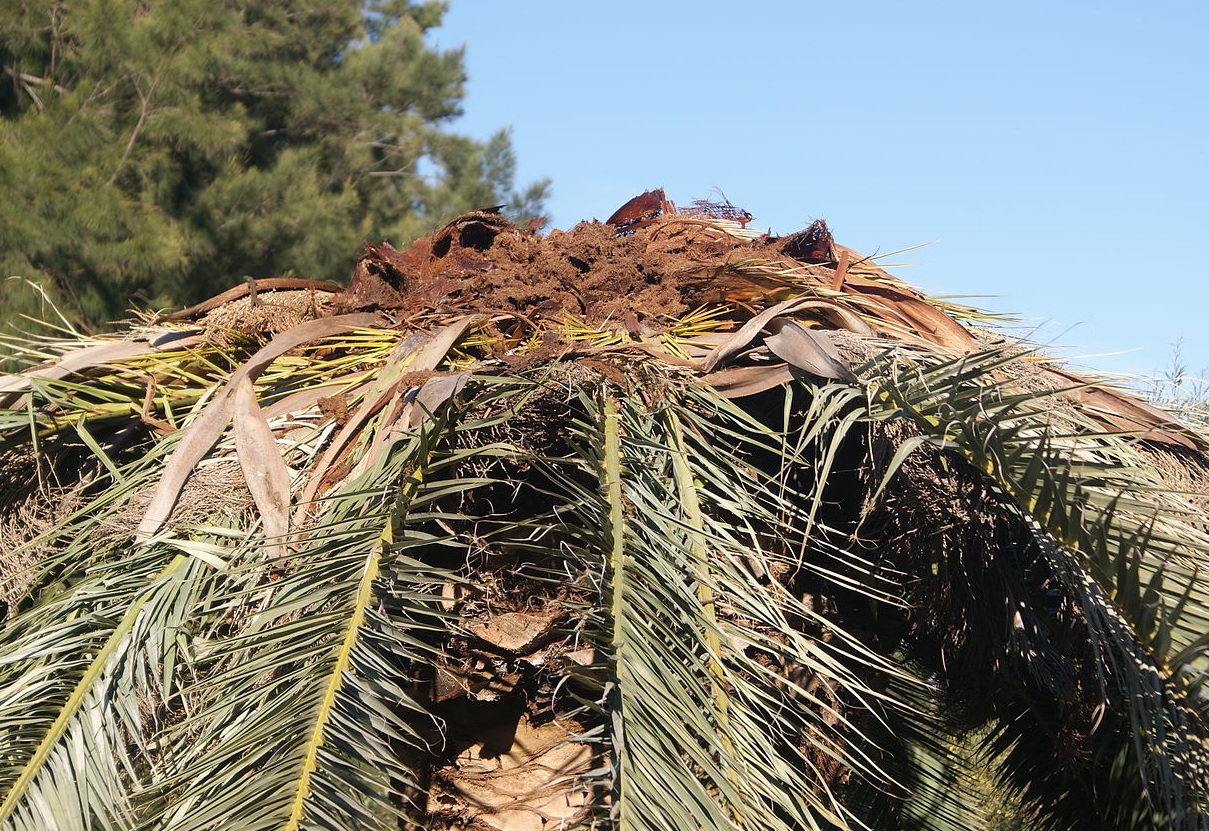Catalogue of traps and pheromones
Download traps and pheromones list

Download document
1.02 mb
The native range of this species is considered to include Bangladesh, Cambodia, China, India, Japan, Laos, Pakistan, Philippines, Sri Lanka, Taiwan, and Vietnam; records from Indonesia, Malaysia, Myanmar, Singapore, and Thailand. Red palm weevil has now been reported and confirmed from Albania, Algeria, Aruba, Bahrain, Croatia, Curaçao, Cyprus, Egypt, France, Greece, Israel, Italy, Jordan, Kuwait, Libya, Malta, Monaco, Montenegro, Morocco, Oman, Palestine, Portugal, Qatar, Saudi Arabia, Slovenia, Spain, Syria, Tunisia, Turkey, and United Arab Emirates. Records from Australia, Papua New Guinea, Samoa, the Solomon Islands.

This species of red palm weevil attack 19 palm species worldwide. The larvae are harmful to various species of palm trees, sugar cane, bananas. Currently, the pest is reported in almost 15% of the global coconut-growing countries and in nearly 50% of the date palm-growing countries.

This weevil usually infests palms younger than twenty years. While the adult causes some damage through feeding, it is the burrowing of the larva into the heart of the palm that can cause the greatest mortality of trees. The adult female lays approximately two hundred eggs on new growth in the crown of the palm, at the base of young leaves, or in open lesions on the plant. The egg hatches into a white, legless larva. The larva will feed on the soft fibres and terminal buds, tunneling through the internal tissue of the tree for about a month. The larvae can occasionally grow to a length of six to seven centimeters. At pupation, the larva will leave the tree and form a cocoon built of dry palm fibers in leaf litter at the base of the tree. The total life cycle takes about 7–10 weeks.

After fertilization, the adult female can lay between 300 and 500 eggs. They lay in holes they produced while searching for food. After laying, the female protects and secures the eggs with a secretion that rapidly hardens around the eggs. On average, females produce 210 eggs per clutch, most of which hatch over a period of 3 days.
The neonate(newborn) larvae are yellow-white, segmented, legless, and have a chitinous head capsule that is a darker brown than the rest of the body. Upon completion of larval development, the larva will sometimes emerge from the trunk of the tree, and build a pupal case of fiber extracted from the galleries inside the palm.

The adult insect is an excellent flier and is able to travel great distances. While they prefer to attack palms that are already infested or weakened by other stresses, they will colonize healthy palms.
Signs of damage to the trees
- drying of the Central rosette in the palm tree, changing the color of the leaves;

- lowering of the leaves, the crown of the palm tree gets a roof-like appearance;
- the presence of flight holes on the trunks of palm trees, the size of the holes can reach up to 3 cm or more in diameter;

- breaking off the trunks of palm trees;
- finds inside the trunks of larvae, pupae, and beetles.

SYNONYM:
Calandra ferruginea
Curculio ferrugineus
Rhynchophorus signaticollis
Proper use of Pheromone Traps:
The pheromone trap is designed to monitor and reduce pest numbers. In order to determine the population density of pest insects and to identify pest outbreaks (monitoring), it is recommended to use 1 trap per 1 ha.
The trap should be placed in the crown of the tree at a height of 1.5-2 m. Prior to the first flight of the weevils, the traps must be checked on a daily basis, and after the first weevils have been captured, the traps must be checked every 5-7 days. Protective measures are based on the results of the monitoring of population density of pest insects.
Trap placement:
For mass capture and sterilization of males, it is recommended to have more than 20 traps per hectare. In case of a large number of pest insects use 30 traps per 1 ha.
Download traps and pheromones list

1.02 mb
Review our catalogue of pheromons and semiochemicals by chemical name

525.1 kb